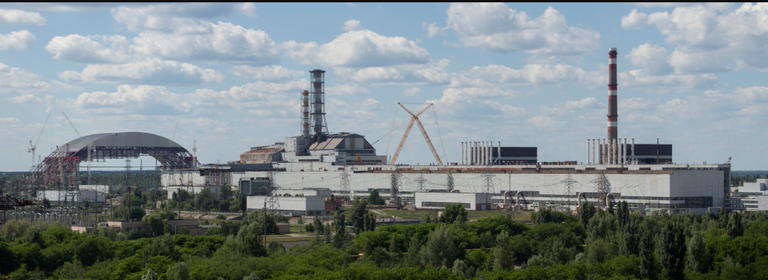What's radioactivity?
Radioactivity according to my chemistry tutor is the spontaneous emission of radiation by an element and Nuclear energy is the natural radioactivity that is spontaneous and uncontrolled decay of unstable nuclei.
A brief history; In 1896, Becquerel observed that a crystal of a uranium salt spontaneously emitted radiation which could penetrate through opaque material to affect a photographic plate. Further more experiments showed that the metal uranium and all it's compound possessed the same property. Becquerel concluded that the uranium atoms were responsible for the emission of this unknown radiation and called this phenomenon radioactivity.
HERE ARE SOME KEY FACTS ON THE COMPARISIM OF THE FUKASHIMA AND CHERNOBLY NUCLEAR DISASTER.
Both the 2011 accident at the Fukushima Daiichi nuclear energy facility in Japan and the Chernobyl accident in the former Soviet Union in 1986 required countermeasures to protect the public. This fact netted both accidents the highest rating on the International Nuclear and Radiological Event Scale (INES). However, the accidents were starkly different in their cause, the governments’ response and health effects.
The accident at Fukushima occurred after a series of tsunami waves struck the facility and disabled systems needed to cool the nuclear fuel.
The accident at Chernobyl stemmed from a flawed reactor design and human error. It released about 10 times the radiation that was released after the Fukushima accident.
According to the International Atomic Energy Agency (IAEA), there was less total atmospheric release of radioactivity from the Fukushima accident compared with Chernobyl due to the different accident scenarios and mechanisms of radioactive releases.

hp laptop enter key not working
Aerial view from chernobyl nuclear plant.
In Chernobyl, the release started with a nuclear criticality accident which triggered an in-core steam explosion, causing an intensive ejection of the overheated core material and extensive burning of graphite and reactor materials over a long period of time. The release was not confined because that type of reactor did not have a containment structure as designed in all U.S. reactors. As a result, radioactivity had a direct open path to the environment, enhanced by entrainment in the smoke from the burning graphite.
At Fukushima, there were no explosions within the cores. Rather, progressive heating, oxidation and meltdown of the cores occurred over a much longer period of time. The radioactive products were thus released from the core much more gradually, with some of the radioactive material confined by containment structures which partially retained the radioactivity. Also, the plant’s suppression pool water provided scrubbing (or “cleaning”) of radioactive products that reduced the atmospheric release at Fukushima.

keyboard test online
Aerial view from fukushima daiichi nuclear plant
The Japanese government moved rapidly to implement protective measures, evacuating people and halting food shipments from the area. The government also distributed potassium iodide to residents near the facility to prevent their thyroid glands from absorbing radiation. These actions limited any adverse health effects from the accident.
Authorities in the former Soviet Union were slow to act to protect the supply of food and milk, which led to a spike in thyroid cancers among children and adolescents from consuming contaminated foodstuffs.
No deaths from radiation exposure have been attributed to the accident at Fukushima. Separate studies published in 2013 by the United Nations (UN) and the World Health Organization concluded that health risks from radiation released during the Fukushima accident are minimal, even for those “most affected,” and there are essentially no health effects outside Japan.
At Chernobyl, 28 highly exposed workers died within four months of the accident. Experts say there is “some evidence” of an increased risk of leukemia and cataracts among workers who received higher doses when engaged in recovery efforts. Long-term health monitoring of these workers is ongoing. As of 2005, about 15 children had died from thyroid cancer.
Improved monitoring has been implemented to help ensure that thyroid cancer is detected early, when it is highly treatable. However, countermeasures taken over the next few years after the accident kept radiation doses relatively low. The resulting doses “should not lead to substantial health effects in the general population,” according to a 2011 report from the United Nation.
https://www.nei.org/resources/fact-sheets/comparing-fukushima-and-chernobyl
knowing about all this and the benefit of power radioactivity brings to our inhabitant life i think those nuclear power plant should be located probally in an island close to the town and maybe some place far away from these towns , so that the evacuation of the people on those towns would be easier and safer for every persons there and around the globe.
I think some routine drills should be carryout in those areas where these various plants are located and with that been done most times , every individual will know how to prevents themselves from in contact with the radiation from the nuclear plant while waiting for the government intervention.
source from NEI and my BRAIN
https://www.nei.org/resources/fact-sheets/comparing-fukushima-and-chernobyl
image source
https://images.app.goo.gl/J35oszHt1xrvPSCC6
https://www.google.com/maps/uv?pb=!1s0x6020dd12229e98cb:0x7ea02406dcd88eba!3m1!7e115!4shttps://lh5.googleusercontent.com/p/AF1QipOVvKYhcffwygCS_QnHuxne2gXyLKielw6Zz3an%3Dw240-h160-k-no!5sfukushima+daiichi+nuclear+power+plant+-+Google+Search!15zQ2dJZ0FRPT0&imagekey=!1e10!2sAF1QipOVvKYhcffwygCS_QnHuxne2gXyLKielw6Zz3an&hl=en&sa=X&ved=2ahUKEwjls__Q-570AhWHIjQIHa05AhUQoip6BAhbEAM